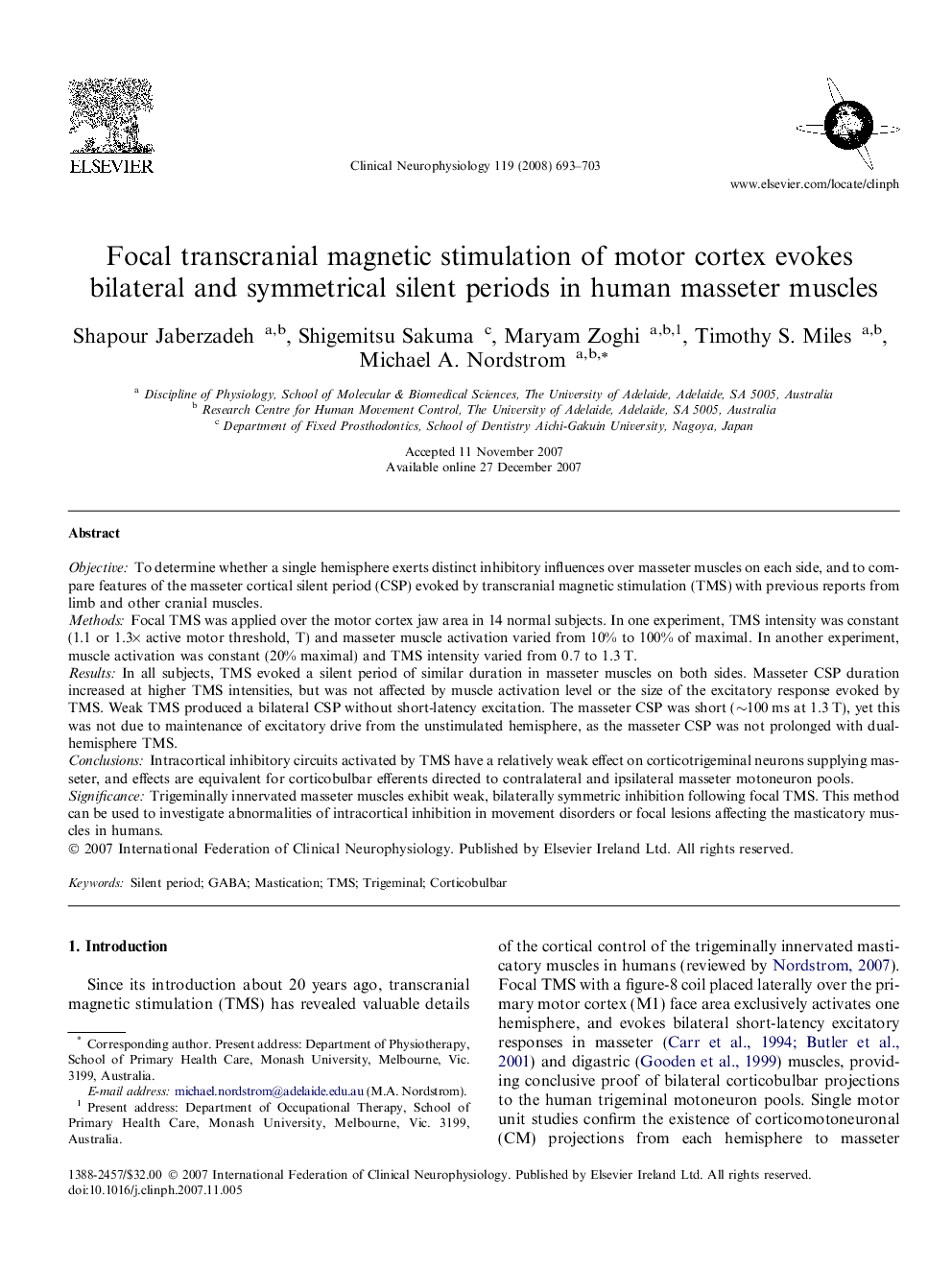| Article ID | Journal | Published Year | Pages | File Type |
|---|---|---|---|---|
| 3046604 | Clinical Neurophysiology | 2008 | 11 Pages |
ObjectiveTo determine whether a single hemisphere exerts distinct inhibitory influences over masseter muscles on each side, and to compare features of the masseter cortical silent period (CSP) evoked by transcranial magnetic stimulation (TMS) with previous reports from limb and other cranial muscles.MethodsFocal TMS was applied over the motor cortex jaw area in 14 normal subjects. In one experiment, TMS intensity was constant (1.1 or 1.3× active motor threshold, T) and masseter muscle activation varied from 10% to 100% of maximal. In another experiment, muscle activation was constant (20% maximal) and TMS intensity varied from 0.7 to 1.3 T.ResultsIn all subjects, TMS evoked a silent period of similar duration in masseter muscles on both sides. Masseter CSP duration increased at higher TMS intensities, but was not affected by muscle activation level or the size of the excitatory response evoked by TMS. Weak TMS produced a bilateral CSP without short-latency excitation. The masseter CSP was short (∼100 ms at 1.3 T), yet this was not due to maintenance of excitatory drive from the unstimulated hemisphere, as the masseter CSP was not prolonged with dual-hemisphere TMS.ConclusionsIntracortical inhibitory circuits activated by TMS have a relatively weak effect on corticotrigeminal neurons supplying masseter, and effects are equivalent for corticobulbar efferents directed to contralateral and ipsilateral masseter motoneuron pools.SignificanceTrigeminally innervated masseter muscles exhibit weak, bilaterally symmetric inhibition following focal TMS. This method can be used to investigate abnormalities of intracortical inhibition in movement disorders or focal lesions affecting the masticatory muscles in humans.
